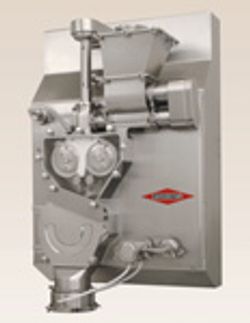
OR WAIT null SECS
- About Us
- Advertise
- Contact Us
- Editorial Info
- Editorial Advisory Board
- Do Not Sell My Personal Information
- Privacy Policy
- Terms and Conditions
© 2025 MJH Life Sciences™ , Pharmaceutical Technology - Pharma News and Development Insights. All rights reserved.
Sonocrystallization Can Yield Optimized Inhalable Drug Powders
Equipment and Processing Report
Power ultrasound-mediated crystallization (i.e., sonocrystallization) can offer significant benefits for the manufacture of inhalable drug powders, compared with destructive techniques such as milling.
To manufacture 2–6-µm microcrystalline particles for inhaled drug delivery, the pharmaceutical industry often mechanically mills large crystalline material into a size suitable for respiratory medicines. This high-energy, destructive process, however, can introduce many problems (e.g., poor chemical and physical stability) that can lead to product variation and performance limitations. Conversely, constructive particle engineering using scalable power ultrasound-mediated crystallization (i.e., sonocrystallization) and processing technologies offers significant benefits for the manufacture of inhalable drug powders. Sonocrystallization involves the application of power ultrasound to a processing medium, which leads to the formation of energetic cavitation bubbles where crystal nucleation can take place (1).
Ultrasound Mediated Amorphous to Crystalline transition (UMAX, Prosonix, Oxford, UK) technology, a proprietary sonocrystallization method, is used to manufacture inhalable drug particles. To date, particles of corticosteroids, beta agonists, and anticholinergics—drugs that treat asthma and chronic obstructive pulmonary disease—have been manufactured at kilogram scale. UMAX, which is being evaluated for critical process development and industrial scale-up, requires robust industrial ultrasonic equipment operating at 20–100 kHz and facilitates the manufacture of spheroidal and regular-shaped particles for dry-powder inhalers (DPIs) and metered-dose inhalers (MDIs).
The UMAX process involves careful spray drying of an active pharmaceutical ingredient (API) solution, applying ultrasound to the amorphous or part-amorphous particles suspended in a nonsolvent, and crystalline-solid isolation through spray drying, evaporative drying, or supercritical carbon-dioxide drying. The latter drying process is broadly applicable, particularly to nonvolatile hydrocarbons, but not to aqueous systems. Final-product isolation by spray drying is considered best for volatile solvents and water. The particles produced by applying ultrasonic energy have the optimal size, shape, surface rugosity, and surface free energy for formulation as respiratory drug products. As a result of acoustic cavitation, the particles become completely crystalline and acquire a rough, stable surface with a surface area significantly greater than that of mechanically milled material.
Aerosolization efficiency depends on properties such as particle size and size distribution, surface properties, crystallinity, hygroscopicity, electrostatic charge, and relative humidity. In addition, a direct relationship exists between the fine-particle fraction (FPF)—the fraction of particles expected to reach the airways—and particle size, powder cohesion, and air shear force. By optimizing and controlling these performance criteria, UMAX facilitates the production of highly stable particles that are delivered to the lung more efficiently than mechanically micronized material is (2).
UMAX requires initial solution atomization to confer sphericity on the particles prepared. Conversely, Dispersive Crystallization with Ultrasound (DISCUS, Prosonix) is a liquid-based ultrasound-assisted antisolvent method whereby powerful cavitation effects promote efficient solute and solvent diffusion into the antisolvent with the concomitant formation of microcrystals. An antisolvent stream is recirculated rapidly through the flow cell while the substrate feed solution is fed slowly and directly into the flow cell. This method leads to rapid dispersion and crystallization of micrometer- and submicrometer-sized particles that can be isolated by spray drying, for example.
UMAX and DISCUS are used to engineer and manufacture microcrystalline single- and dual-component particles for DPIs and MDIs, thus yielding structured drug products that can outperform existing commercial medicines. Many inhaled corticosteroids, including budesonide, fluticasone propionate, and mometasone furoate; beta agonists, including fenoterol hydrobromide, salmeterol xinafoate, and formoterol fumarate; and anticholinergic agents, including tiotropium bromide, have been produced. UMAX can be used to prepare fluticasone propionate at multikilogram scale for DPIs and MDIs.
As well as overcoming the particular problems of milling this steroid, UMAX can yield particles with exceptional stability, thus producing excellent in vitro performance. Users can match the drug’s performance in MDIs to that of marketed drug products (e.g., to demonstrate generic equivalence) or enhance it to yield superior FPF. This flexibility can help users design generic drug products with new formulations or delivery routes to improve clinical performance or target a new therapeutic area. Structured drug products derived from UMAX processing show excellent stability and consistency of fine-particle delivery over several months. Anticholinergic agents can be prepared with spherical morphology, thus avoiding the surface amorphicity and inconsistency in product formulation typical when high-energy milling is used for this group of pharmaceutical ingredients. When formulated for DPIs and MDIs, these agents have shown great stability and excellent in vitro impactor performance during a period of one year.
UMAX technology also can manufacture inhaled combination particles that include two or more pharmaceutical ingredients processed into highly crystalline particles. This technique is particularly beneficial when the drugs act in synergy or must be delivered together accurately on the lung surface. The technology has created particles with API ratios from 1:1 to 1:100. The data have clearly demonstrated the particles’ dose-content uniformity and consistent mass deposition of both APIs, irrespective of the time between formulation and use (2).
Industrial particle engineering with UMAX has yielded high-quality results in the manufacture of microcrystalline single- and dual-component particles designed for formulation into structured DPI and MDI drug products. The particles have exhibited excellent performance, consistency, and reliability in all delivery platforms, independent of device. UMAX technology could lead to rapid marketing approval of differentiated products, and to new therapies for emerging markets using low-cost simple devices.
References
- G. Ruecroft et al., Org. Process Res. Dev.9 (6), 923–932 (2005).
- G. Ruecroft, C. Jones, and D. Hipkiss, Proceedings of Respiratory Drug Delivery 2010, Book 3 (Orlando, FL, 2010), pp. 753–757.
Graham Ruecroft is chief technical officer of Prosonix, Magdalen Centre, Robert Robinson Ave., Oxford Science Park, Oxford OX4 4GA, United Kingdom, tel. +44 0 1865 784250, fax +44 0 1865 784251, [email protected].

